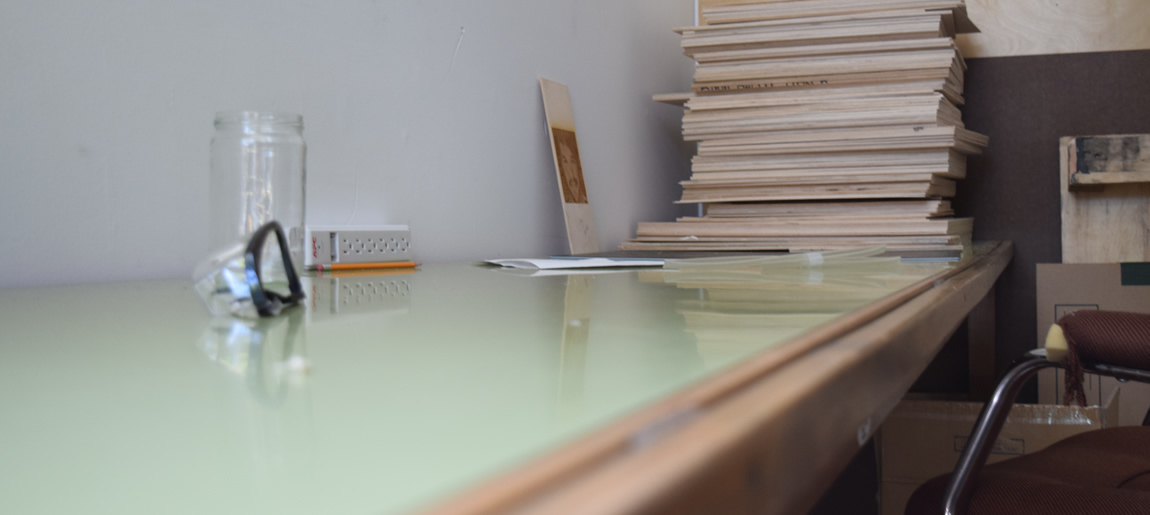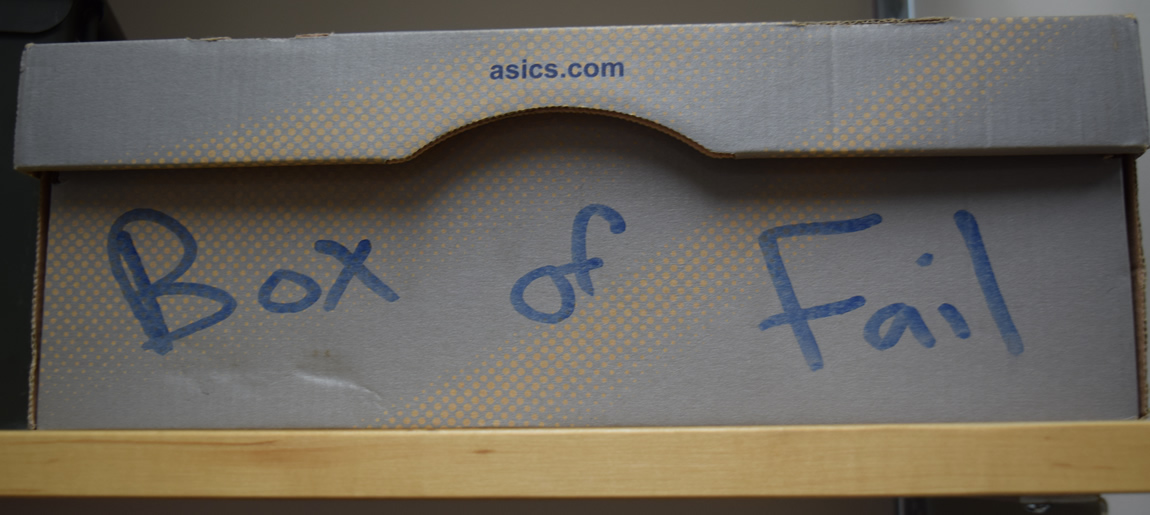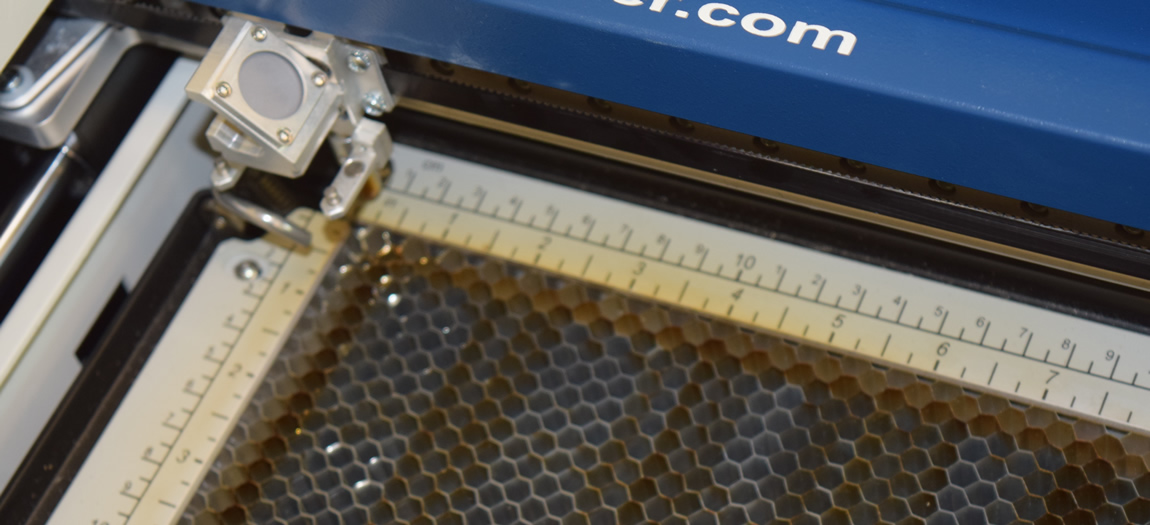On May 22nd, I had the opportunity to present MLab research at the annual BC Library Conference. Whereas a majority of my MLab talks have focused on the Kits for Cultural History, the BC Library talk was about infrastructure—especially lab infrastructure—as research. In this sense, I am thinking about how the development and maintenance of humanities labs must be informed by precedent, anchored in relations (e.g., with existing models), and understood as cultural practices (e.g., lab spaces are value-laden, and they persist through habits). For these reasons, we recently decided to share the MLab’s inventory in spreadsheet form to communicate aspects of our physical computing and fabrication research.
But, when I suggest that infrastructure is research, I also mean it is entangled in questions that are addressed, often collectively, by lab researchers. Here, I find recent work by Lisa Parks and Nicole Starosielski compelling. In their introduction to Signal Traffic (U. of Illinois P. 2015), they call for “infrastructural dispositions” in media studies that foreground “processes of distribution,” “the unique materialities of media distribution,” and “the relation between technological literacies and public involvement in infrastructure development, regulation, and use” (5-6, emphasis original). In short, an infrastructural disposition treats “infrastructure as a concept and material formation” (17). With the MLab in particular, processes, materialities, literacies, and forms of involvement congeal around two specific research questions operating across most, if not all, of our projects: after the Internet, computer screens, and new media, what makes tactile media persuasive? What do tactile media do now, differently, for scholarly communication?
At the 2015 BC Library Conference, I detailed how exactly the MLab’s research practices correspond with its infrastructure, which exists in two physical places on the UVic campus: our prototyping lab in the Technology Enterprise Facility and our fabrication lab in the Visual Arts Building. Of course, our infrastructure also includes the spaces of our research: talks at and beyond UVic, this website, teaching at DHSI, publications in journals and books, as well as routine contributions to GitHub and Twitter (among many other examples). As I suggested during my talk at the conference, defining lab infrastructure as both space and place positions labs as “between states” beyond a vulgar reduction to their physical composition. In the case of the MLab, our physical location in two places requires us to think relationally—both materially and conceptually—about the arts and humanities. What lines of inquiry might emerge between them, without relying too much on disciplinary ownership or territory? What sort of research processes, including processes for producing and distributing scholarship, might happen in the middle of creative and critical work? When do the practices of place exceed their geographic location and cultivate what happens beyond them?
These sorts of questions shape how the MLab perceives infrastructure through both literacy and materiality, affording us various ways to define our research aims. During my BC Library Conference talk, I explored these variations as differences in how digital humanities is conducted, communicated, and maintained in the MLab. The slides for my talk are available online (they may need a minute to load), and some stills from the slides are below, where I’ve also taken the opportunity to elaborate and reflect upon the talk in writing, with Parks and Starosielski’s notion of “infrastructural disposition” in mind. For what it’s worth, my goal is to highlight how doing digital humanities cannot be neatly parsed from local infrastructure and habits. Yet I also want to stress an important point: an infrastructural disposition does not imply that infrastructure determines practice or process. Instead, it fosters variability steeped in matter. In this particular instance, variability is expressed through multiple—and perhaps conflicting—definitions of doing digital humanities. As a between state (e.g., the hinge between place and space or the articulation of arts and humanities), the MLab is in flux. With the materials at hand, the research team performs or practices multiple definitions of a given field, sometimes simultaneously. Yet these practices are not unbounded or whimsical. They cannot (or at least should not) be abstracted from the particulars of situation, setting, and discourse.
If you enter the MLab’s prototyping lab, it will likely strike you as quite similar to most digital humanities labs. There are computer workstations, displays, whiteboards, scanners, and office chairs on casters. (See Figure 1 below.) In this sense, doing digital humanities in the MLab is digitizing material, modeling and encoding it, and sharing it.
But the MLab is also similar to a lounge. Comprised of 100+ books in media and technology studies, our lending library is essential to the lab’s culture. Books come and go. Notes are added. Dialogue emerges in the margins. We often spend time reading in the lab, too, and we rely on several tackboards to share announcements, ideas, and work in progress. (See Figure 2 below.) Together, the lending library and tackboards regularly spark spontaneous conversations—and debates!—that deeply influence our research. Without these conversations, the technical work we do would lack necessary conceptualization and contextualization. It would also feel a bit detached from the present, or a touch depersonalized and abstract. To do digital humanities, then, is to yack about theory and process.
Those theories and processes neatly intersect with the MLab’s craft-room-like feel. Although our materials are organized using perforated hardboard and modular bins (see Figure 3 below), we rely heavily on mess-making, tinkering, and tacit learning as literacies. Smart research frequently results from the “adjacent possibilities” of a mess. (For more on the adjacent possible, see this interview.) Experimenting with the unique materialities of media also foregrounds what we may already know, not know, or assume about them, and—at least in the MLab—it involves working between old and new technologies, privileging maintenance over novelty, thinking through component parts, and reusing those parts across projects. Put this way, to do digital humanities is to prototype, and this prototyping—as craft—is intertwined with yacking, lounging, theorizing, reading, annotating . . .
The MLab is also a place for storing our sketches, drafts, iterations, and hiccups in, for example, a box of fail. (See Figure 4 below. Boxes of fail are common in makerspaces.) Researchers need somewhere to put their middle states, which are also conversation pieces when people visit the lab: “We tried this idea, but we didn’t anticipate . . .” “We thought it would work until we built it. Then we learned . . .” Storage overlaps with rumination. Materiality intersects with learning and literacy. To do digital humanities is to archive, revise, and reflect (tho, to be fair, I’m using “archive” rather loosely here).
Once we repeatedly test and agree upon a prototype, the MLab becomes a space for manufacturing, too. Iteration, revision, and reflection collectively transition into the production and distribution of multiples (e.g., see the Kits for Cultural History project). This manufacturing relies on various computer numerical control machines in our fabrication lab, including a laser cutter. (See Figure 5 below.) Framed through the perspective of manufacturing, to do digital humanities is to make and circulate tactile objects for audiences beyond a local research setting.
To be clear, spaces for manufacturing must also be safe spaces. Labs require signage, training, protocols, and safety equipment, together with detailed documentation of machine use and procedure. Machines must also be regularly maintained, and tools and supplies need to be cleaned daily. As such, basic fixtures such as sinks (see Figure 6 below), not to mention equipment for extraction and ventilation, are central to the MLab’s operation. They also speak to the need for boundaries between physical places: when, for example, you don’t want your space for manufacturing to overlap with your space for yacking, lounging, digitizing, or encoding. To do digital humanities is to integrate best practices for health, safety, and the environment into your infrastructure and laboratory culture.
Finally, the MLab is a space for post-production and repair. (See Figure 7 below.) In the case of CNC manufacturing, nothing leaves a machine instantly ready for use by public audiences. Fabricated objects must be tuned, fixed, tested, tweaked, glued, finished, or—generally speaking—assembled and refined. This attention to post-production demystifies the popular allure of automation. To do digital humanities is to prepare materials for distribution, without assuming that computing operates seamlessly, somehow withdrawn from assistance or intervention.
Taken together, these various definitions of doing digital humanities suggest that the MLab is irreducible to its physical location and composition, even if infrastructure is entangled in practice. Following this suggestion, we might ask how arts and humanities labs are articulated, how—as places—they are brought and thought together, and how their processes, materialities, literacies, and forms of involvement shift between states, through matter, over time.
I would like to thank Anne Olsen and Erin Fields for inviting me to speak at the 2015 BC Library Conference. It was an honor and a pleasure. The conference was a fantastic event.
Post by Jentery Sayers, attached to the Makerspace project, with the news, fabrication, and physcomp tags. Featured images for this post care of Jentery Sayers and the Maker Lab.







